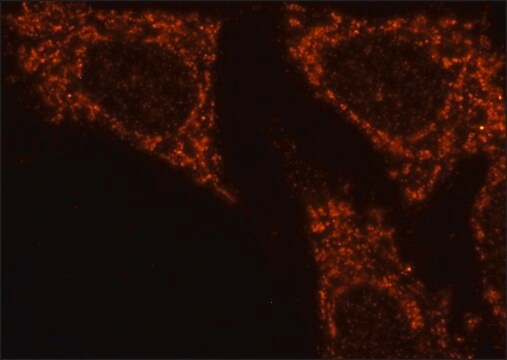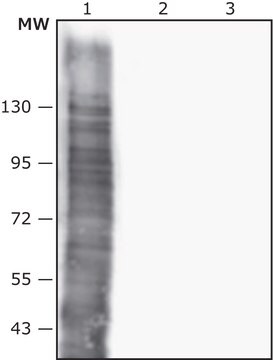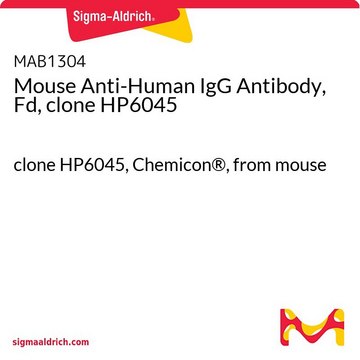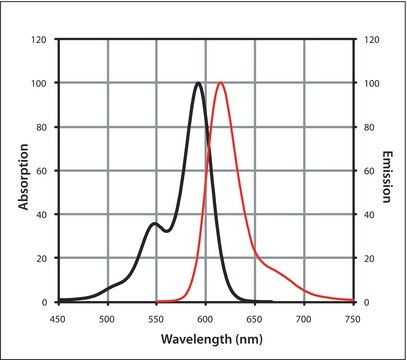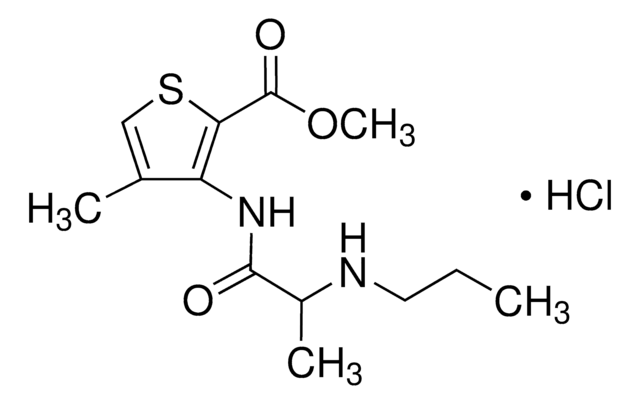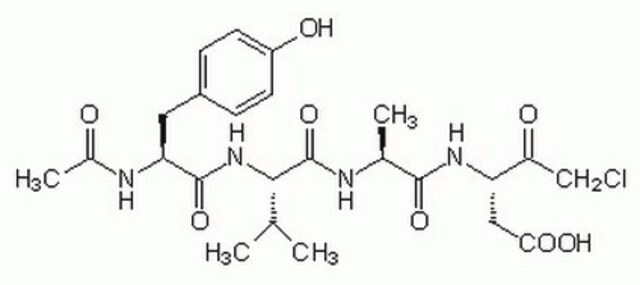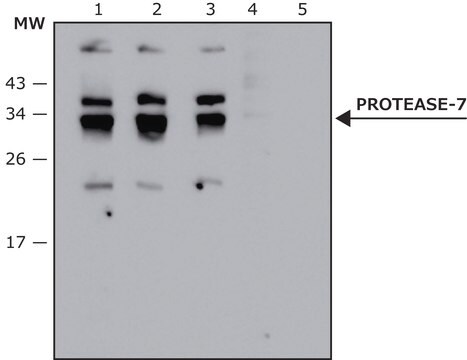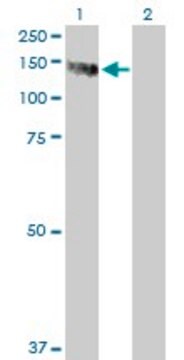SAB4200848
Anti-FAM134B (lumenal) antibody produced in rabbit

affinity isolated antibody, buffered aqueous solution
Synonim(y):
JK1, RETREG1, reticulophagy regulator 1
Zaloguj sięWyświetlanie cen organizacyjnych i kontraktowych
About This Item
Kod UNSPSC:
12352203
NACRES:
NA.41
Polecane produkty
forma przeciwciała
affinity isolated antibody
Poziom jakości
Postać
liquid
reaktywność gatunkowa
human
rozszerzona walidacja
recombinant expression
Learn more about Antibody Enhanced Validation
stężenie
~1 mg/mL
numer dostępu UniProt
Warunki transportu
dry ice
temp. przechowywania
−20°C
docelowa modyfikacja potranslacyjna
unmodified
Opis ogólny
Five endoplasmic reticulum (ER)-resident proteins have been shown to function as receptors for selective ER-phagy: FAM134B, SEC62, RTN3, CCPG1 and ATL3.1-2 These integral membrane proteins appear to partition into different sub-domains of the ER. All of them harbor a sequential peptide motif within the cytoplasmic region, enabling binding to LC3/GABARAP proteins associated with phagophore membrane.1 FAM134B (also known as RETREG1 or JK-1) is the first ER-phagy receptor to be identified.2
Specyficzność
Anti-FAM134B (lumenal) antibody specifically recognizes an epitope on human FAM134B ER luminal domain.
Zastosowanie
The antibody may be used in various immunochemical techniques including Immunoblotting (~55 kDa) and Immunofluorescence. Detection of the FAM134B band by Immunoblotting is specifically inhibited by the immunogen.
Działania biochem./fizjol.
FAM134B was discovered to be involved in the pathogenesis of esophageal squamous cell carcinoma (ESCC).3-4 Loss of function mutations in FAM134B result in severe sensory and autonomic neuropathy (HSANII).5 In addition, FAM134B has been classified as an intra-membrane ER-resident protein that is characterized by the presence of a reticulon homology domain (RHD) and that is mainly located at the edges of the ER sheets.1,6 In research, FAM134B is implicated in the suppression of viral replication during Ebola, Dengue, Zika and West Nile viral infections.7-8 Non-structural viral proteases such as NS2S3 specifically cleave FAM134B, thereby subverting ER-phagy.7 Specific mutations in FAM134B and expression profiles are strongly correlated with colorectal cancers.9 Increased expression of FAM134B is also implicated with susceptibility to vascular dementia and allergic rhinitis.9-10
Postać fizyczna
Supplied as a solution in 0.01 M phosphate buffered saline pH 7.4, containing 15 mM sodium azide as a preservative.
Przechowywanie i stabilność
For continuous use, store at 2-8°C for up to one month. For extended storage, freeze in working aliquots. Repeated freezing and thawing is not recommended. If slight turbidity occurs upon prolonged storage, clarify the solution by centrifugation before use. Working dilution samples should be discarded if not used within 12 hours.
Oświadczenie o zrzeczeniu się odpowiedzialności
Unless otherwise stated in our catalog our products are intended for research use only and are not to be used for any other purpose, which includes but is not limited to, unauthorized commercial uses, in vitro diagnostic uses, ex vivo or in vivo therapeutic uses or any type of consumption or application to humans or animals.
This page may contain text that has been machine translated.
Kod klasy składowania
10 - Combustible liquids
Klasa zagrożenia wodnego (WGK)
WGK 1
Temperatura zapłonu (°F)
Not applicable
Temperatura zapłonu (°C)
Not applicable
Certyfikaty analizy (CoA)
Poszukaj Certyfikaty analizy (CoA), wpisując numer partii/serii produktów. Numery serii i partii można znaleźć na etykiecie produktu po słowach „seria” lub „partia”.
Masz już ten produkt?
Dokumenty związane z niedawno zakupionymi produktami zostały zamieszczone w Bibliotece dokumentów.
J C Tang et al.
Clinical cancer research : an official journal of the American Association for Cancer Research, 7(6), 1539-1545 (2001-06-19)
In this study, we screened 19 esophageal squamous cell carcinomas (ESCCs) for the detection of genetic alterations using inter-simple sequence repeat PCR, a DNA fingerprinting approach. Three simple repetitive unanchored primers representing tri- and tetranucleotide repeats [(GTG)(5), (GACA)(4), and (GATA)(4)]
Nicholas J Lennemann et al.
Autophagy, 13(2), 322-332 (2017-01-20)
The endoplasmic reticulum (ER) is exploited by several diverse viruses during their infectious life cycles. Flaviviruses, including dengue virus (DENV) and Zika virus (ZIKV), utilize the ER as a source of membranes to establish their replication organelles and to facilitate
Ingo Kurth et al.
Nature genetics, 41(11), 1179-1181 (2009-10-20)
Hereditary sensory and autonomic neuropathy type II (HSAN II) leads to severe mutilations because of impaired nociception and autonomic dysfunction. Here we show that loss-of-function mutations in FAM134B, encoding a newly identified cis-Golgi protein, cause HSAN II. Fam134b knockdown results
Paolo Grumati et al.
Journal of cell science, 131(17) (2018-09-05)
Selective autophagy represents the major quality control mechanism that ensures proper turnover of exhausted or harmful organelles, among them the endoplasmic reticulum (ER), which is fragmented and delivered to the lysosome for degradation via a specific type of autophagy called
Nasz zespół naukowców ma doświadczenie we wszystkich obszarach badań, w tym w naukach przyrodniczych, materiałoznawstwie, syntezie chemicznej, chromatografii, analityce i wielu innych dziedzinach.
Skontaktuj się z zespołem ds. pomocy technicznej